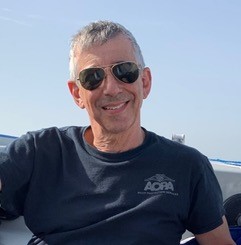Fly Well: Impacts and collisions
Grieving a loss, preventing further tragedies
 Sometimes circumstances collide in seemingly bizarre ways. Sometimes collisions have a massive impact. This is a story of impacts and collisions. I try to pepper my writing with wit in the hope of keeping my readers’ attention, but today I must make my impact with quite a different tone.
Sometimes circumstances collide in seemingly bizarre ways. Sometimes collisions have a massive impact. This is a story of impacts and collisions. I try to pepper my writing with wit in the hope of keeping my readers’ attention, but today I must make my impact with quite a different tone.
Many months ago, AOPA honored me by asking if I would represent the association at an NTSB forum, “Humans and Hardware: Preventing General Aviation In-flight Loss of Control.” My topic? Medical issues impairing pilot performance. I determined to make an impact by detailing how over-the-counter cold medicine, for instance, was implicated in fatal accidents by affecting judgment. I prepared my talk oblivious to how powerfully life would affect my participation.
Several days before the forum, I received a phone call that deeply affected me. My friend and colleague had crashed and died in his general aviation aircraft, together with his daughter. At the time, I was en route to a local airshow, but I promptly turned around as the thought of doing anything remotely enjoyable—let alone involving aircraft—was anathema. I was emotionally drained that day and for days afterwards, struggling to come to terms with this awful event.
My pal was a thoughtful, quiet, and deliberate guy: a wonderful leader, devoted family man, and the furthest you could imagine from a reckless pilot. But he was dead, nevertheless—and possibly from a loss-of-control accident. My first impulse was to cancel my NTSB participation, especially when I learned that a memorial service and celebration of his life was scheduled for the same day—in fact, at the same time as my talk.
Then I had another idea. I decided to attend the forum and make the most of the opportunity. The faculty at NTSB headquarters was world class and, frankly, I felt intimidated joining this distinguished group. Data were presented on how common loss of control is, and on causes and contributing factors—including VFR flight into IMC, questionable pilot judgment, lack of training, and abusing substances as obviously sinister as alcohol or as seemingly innocent as cough medicine.
For instance, diphenhydramine is widely present in many over-the-counter medications and after one dose, a pilot should avoid flight for at least 60 hours depending on age—nearly three days. Never mind the fact that if you are even slightly unwell, or sleep deprived, you should not fly—period. We have addressed this in the pages of AOPA Pilot, in our newsletters, and in webinars, yet pilots still fly while ill or fatigued.
Some speakers discussed how technology might play a larger role in preventing accidents. Should angle-of-attack indicators be more prevalent? What about automatic ground collision avoidance? And technology the friend also could be foe, as when aviators rely too much on devices that could mislead them—such as satellite weather systems that might display what was happening 15 minutes earlier.
And of course, training: Why not use simulators more widely, teach unusual-attitude recovery, and have pilots fly the circular pattern favored by the military to avoid making configuration changes while banking at sometimes dangerous angles when low and slow? It all resonated.
Making the wrong kind of impact has three phases: avoiding getting into the situation in the first place (go/no-go decisions); ascertaining when things do not go according to plan and preventing the next shoe from dropping; and, finally, recovering—which, of course, demands that the pilot and airplane in question can recover.
Changing behaviors necessitates changing beliefs. Yes, it can happen to you. It can happen to me. It happened to my friend. So when I gave my talk, I begged the chair’s forbearance and started off by telling the audience about this accident. I dedicated my talk to my friend and I begged the NTSB, faculty, and audience to do everything we can to prevent any other family from going through this torment.
Why did this accident happen? That is not for me to discuss. The experts will review everything and draw their conclusions, but here is mine: As cruel and brutal as this was, it will be much worse if it turns out to have been avoidable. I propose an open-source approach, for we all are responsible for solving the trauma of GA accidents.
In my friend’s name, let’s continue to consider every possible resource to help all of us to do what we love—and to do so as safely and sensibly as possible. Let’s have a collision of the best minds and make a real impact on aviation safety.
Dr. Jonathan sackier answers AOPA members’ medical questions through the AOPA Pilot Protection Services program.
Email [email protected]



